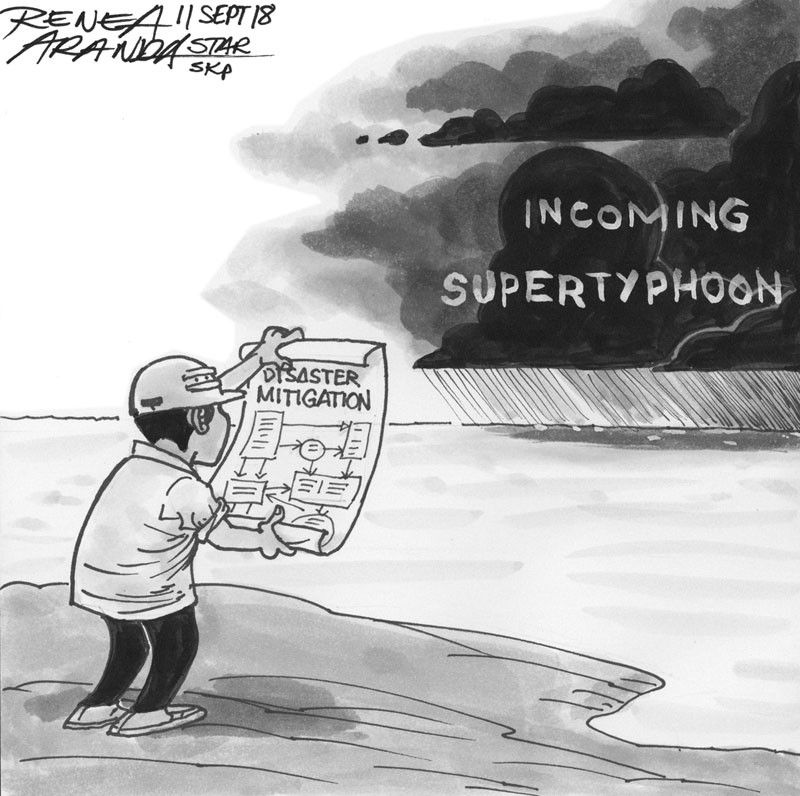EDITORIAL - Preparing for disaster

Weather forecasters have given sufficient warning: an approaching tropical cyclone could develop into a super typhoon as it enters the Philippine Area of Responsibility tomorrow. As of yesterday, Typhoon Mangkhut was reported to be moving westward with maximum winds of 150 kilometers per hour and gustiness of up to 185 kph. If Mangkhut enters the PAR, it will be renamed Ompong.
The rainy season is nearing its end, but powerful typhoons have ravaged the country around this time in the past. Typhoon Milenyo battered Luzon, paralyzed Metro Manila and killed over 300 people in the final days of September 2006. Storm Ondoy pummeled Metro Manila and neighboring provinces also in the last week of September 2009, spawning cataclysmic flooding and leaving over 700 people dead.
Off-season typhoons can also be among the most destructive. One of the world’s strongest tropical cyclones, Haiyan or Super Typhoon Yolanda, flattened Tacloban City and large areas of Eastern Samar and Leyte in November 2013. At least 6,340 people have been confirmed killed; many others remain unaccounted for and are feared to have been washed out to sea.
Preparedness can save lives and minimize damage. Warnings given by forecasters of the Philippine Atmospheric, Geophysical and Astronomical Services Administration cannot be ignored. Even if cyclones veer away from the country, it’s better to be fully prepared when PAGASA warns of a brewing super typhoon.
Metro Manila, the country’s most densely populated region, and its neighboring cities have become particularly vulnerable to destructive flooding even from heavy monsoon rains. The problems spawned by such calamities persist even after the rains have dissipated. In the reclaimed natural floodplains around Laguna de Bay, it can take weeks before floods fully subside. The waters pose health risks including leptospirosis, dengue, respiratory ailments, skin diseases and water-borne afflictions.
In recent years, disaster preparedness has improved. Protocols have been worked out to speed up emergency response and boost rescue and relief operations. Local government units have begun acquiring portable shelters that give disaster evacuees a measure of privacy and comfort at evacuation sites.
Recent flooding and typhoons, however, have shown that more can be done in both preparedness and disaster mitigation. This can be done as the country braces for what might be another super typhoon.
- Latest
- Trending

























